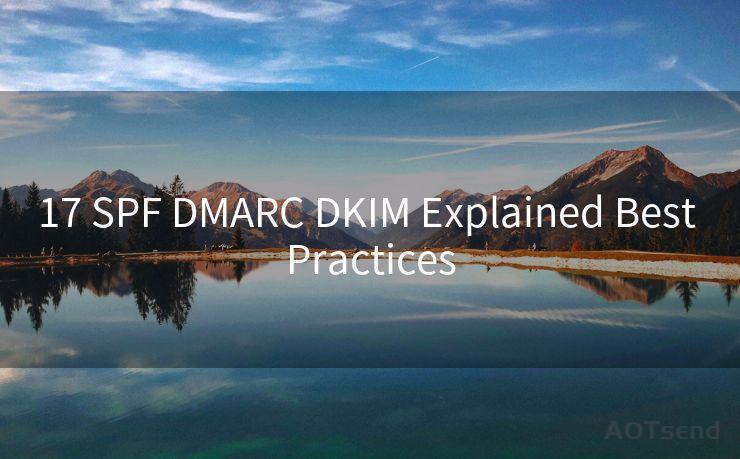17 SPF DMARC DKIM Explained Best Practices




Email authentication is crucial in today's digital landscape, where phishing attacks and email spoofing are common threats. Technologies like SPF (Sender Policy Framework), DMARC (Domain-based Message Authentication, Reporting, and Conformance), and DKIM (DomainKeys Identified Mail) play a pivotal role in securing email communications. In this article, we'll delve into the best practices for implementing these technologies to enhance email security.

1. Understanding SPF, DMARC, and DKIM
SPF, DMARC, and DKIM are email authentication protocols that help verify the legitimacy of an email sender. SPF checks if an email originates from an authorized sending source by validating the IP address of the sending server. DMARC builds upon SPF and DKIM, providing a policy framework for handling unauthenticated emails. DKIM uses cryptographic signatures to ensure that an email's content hasn't been tampered with during transit.
2. Implementing SPF Records
To implement SPF, you need to add a TXT record to your domain's DNS settings. This record specifies which IP addresses or ranges are authorized to send emails from your domain. It's crucial to keep this record up to date as your email sending infrastructure changes.
Best Practices for SPF:
- Keep your SPF record as specific as possible to reduce the risk of spoofing.
- Regularly update your SPF record to reflect any changes in your email sending infrastructure.
- Use tools like the SPF Survey to validate your SPF record's effectiveness.
3. Implementing DKIM Signatures
DKIM adds a digital signature to the email header, allowing recipients to verify that the email hasn't been altered during transit. Implementing DKIM involves generating a public-private key pair and adding the public key to your domain's DNS records.
Best Practices for DKIM:
- Use a strong key size (e.g., 2048 bits) for enhanced security.
- Regularly rotate your DKIM keys to maintain security.
- Ensure your email server is correctly configured to sign outgoing emails with DKIM.
4. Setting Up DMARC Policy
DMARC ties SPF and DKIM together, allowing domain owners to specify a policy for handling emails that fail authentication. DMARC policies can be set to "none" (no action), "quarantine" (mark suspicious emails), or "reject" (block suspicious emails).
🔔🔔🔔
【AOTsend Email API】:AOTsend is a Managed Email Service for sending transactional emails. Support Email Types: reminders, authentication, confirmations, notifications, verification codes, invoices, password resets, account activations, billing statements, two-factor authentication (2FA), and one-time passwords (OTP) emails, etc. $0.28 per 1000 Emails. 99% Delivery, 98% Inbox Rate.
You might be interested in:
Why did we start the AOTsend project, Brand Story?
What is a Managed Email API, How it Works?
Best 25+ Email Marketing Platforms (Authority,Keywords&Traffic Comparison)
Best 24+ Email Marketing Service (Price, Pros&Cons Comparison)
Email APIs vs SMTP: How they Works, Any Difference?
Best Practices for DMARC:
- Start with a "none" policy and gradually move to "quarantine" or "reject" as you gain confidence in your authentication setup.
- Monitor your DMARC reports regularly to identify and address any authentication issues.
- Consider using a DMARC reporting service to help analyze and interpret your reports.
5. Conclusion
Email authentication is essential in protecting your organization and customers from phishing attacks and email spoofing. By implementing SPF, DKIM, and DMARC, you can significantly enhance the security of your email communications. Following the best practices outlined in this article will help you ensure that your emails are properly authenticated and reduce the risk of fraud and misuse.
Remember, email security is an ongoing process that requires regular monitoring and updating. Stay vigilant and keep your authentication records up to date to maintain the highest level of security for your email communications.




Scan the QR code to access on your mobile device.
Copyright notice: This article is published by AotSend. Reproduction requires attribution.
Article Link:https://www.mailwot.com/p6808.html



